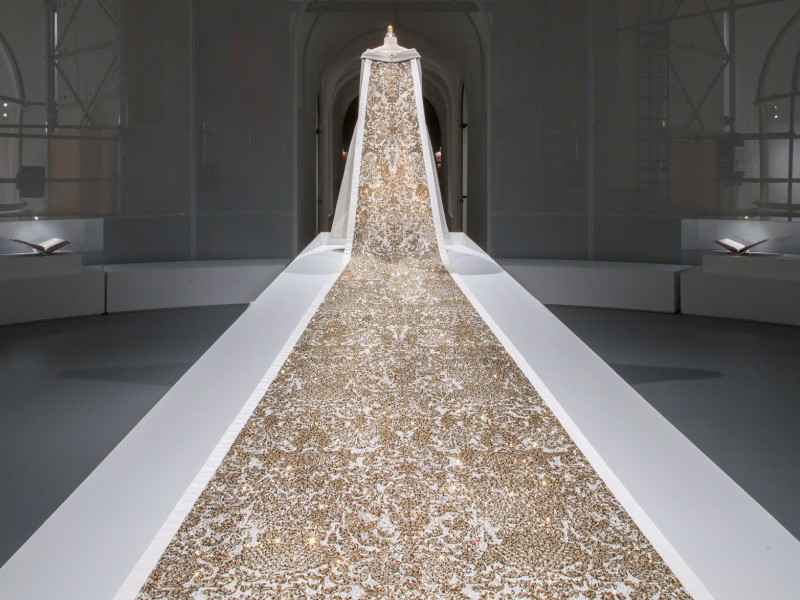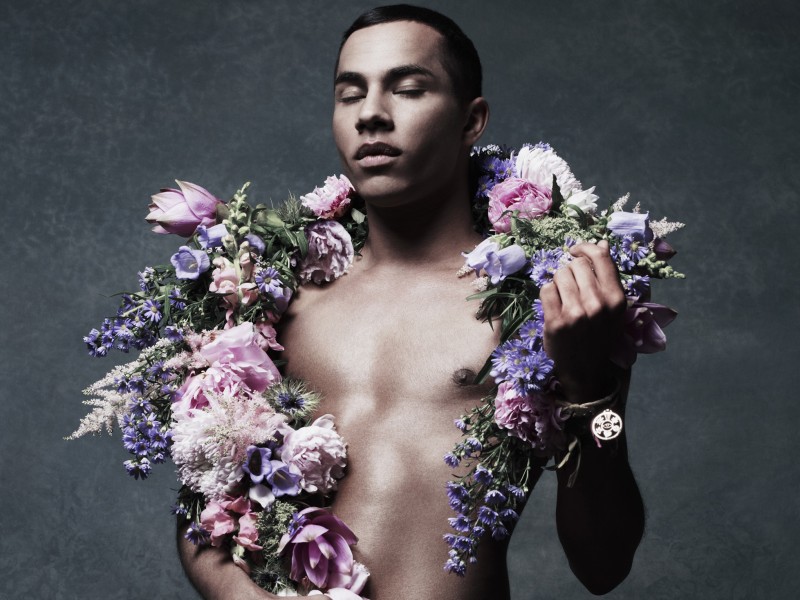On the face of it, Tim Blanks, the renowned fashion critic, doesn’t fit the preconceived idea of a fashion journalist. Famous for his year round uniform of short sleeved floral shirts, he has been producing whip smart reviews for more than three decades that concentrate on the runway soundtrack and the current political climate as much as they do the clothes. “I still think of myself as a real outsider. I’m not a fashion person. I’m a fan.”
Blanks grew up in New Zealand, and made his first trip to London at 18 leading “a very full life before [his] career in fashion”. He was living in Toronto, Canada, when he became the editor of a local fashion magazine, which led in 1989 to a CVC television show, Fashion File, launching Blanks into the world of the international shows. Fashion TV was an interloper, especially amidst fashion’s rarified and dominant press with their notepads and pens. “There were really only 4 of us; Jeanne Beker from Fashion Television, Elsa Klensch at CNN and Marie-Christiane Marek from Paris Mode,” recalls Blanks. “It was just as the supermodel phenomenon hit around 1990. Before that, backstage was a fairly sedate environment but after, it went from four camera crews to about 400.”
According to Blanks, the supermodels were a major game changer. “That’s when fashion became an arm of the entertainment industry and it has stayed that way ever since. Hollywood abdicated its role as an arbiter of glamour. All those beautiful actresses like Jessica Lange were busy denying how beautiful they were and fashion stepped into that gap. My mother suddenly knew who Anna Wintour was. It was a fabulous moment because you absolutely knew that something very different was going on. Especially that fever around the first half of the 1990s and the emergence of Kate Moss and Helmut Lang. Kate Moss changed the face of modelling. Helmut Lang changed the face of fashion.”
Blanks moved over to style.com in 2005, starting on the menswear circuit, and eventually making the move to cover the women’s shows as well, in a journalistic world that was still a reasonably closed set. “I was always surprised that there weren’t more people doing what I was doing to be honest. Every other creative field has a cannon and fashion never ever had one. In the 19th century, there were no credible voices talking about fashion. As an applied art, it was never taken seriously.”
While Blanks’ longevity on the circuit means that he counts a number of designers as friends, he does not feel that has ever impacted on his capacity to deliver truthful reviews. “Remember, the thing about criticism, there is always another season. There are certain designers who simply cannot raise their game. They just can’t. Not everybody is Picasso. Not everybody is David Bowie. Some perfectly good journeymen have very successful careers. Then there are others who are inconsistent but thrilling with their inconsistency. You feel their engagement in what they do. One season they make it, another they don’t. Hopefully they appreciate that you are in for the long haul with them. I actually prefer that.”
On this topic, Blanks gets on a roll. “I’ve always thought that Jean Paul Gaultier suffered from being so incredibly consistent, season after season. If you are served the most perfect dessert every single day, at some point you’re going to lose your appetite for it. You’re going to want an anchovy. That happened at Gaultier. He was just so brilliant for so long, people started taking him for granted. I took him for granted. Now I look back at those shows and I think ‘God, what a genius’.”
“I definitely criticise though,” he asserts, having won the Media Award in Honor of Eugenia Sheppard at the Council of Fashion Designers of America (CFDA) in 2013. “My most recent critiques were about the giant-ism. For example, the Chanel mega shows, the supermarket and the airport show were phenomenal. But the scale of them meant that suddenly the clothes were lost. If I looked at it as social satire it made more sense than as a fashion show. They had literally built an unbridgeable distance between you and the clothes, so you were not sure what you were supposed to be responding to.”
Blanks is also not perturbed by the threat of new media stars and celebrity bloggers taking the place of traditional, credible long form journalism. “I’ve been doing this for 35 years now and I feel fashion values the voice of experience.” Never world weary, Blanks does however have a pithy voice of experience that swiftly cuts to the chase. When asked what is going on with all the designer and creative director departures from major houses, his answer comes straight down the line: “Giorgio Armani once said to me: ‘nobody would let someone go if they’re selling. If they are making money for the owners, they are not going anywhere.’”
The rise of the internet and the independent blogger has certainly opened up the catwalks to everyone, but Blanks envisages no end to the show system. “As far as I’m concerned what I see on the catwalk is what the designer wants me to see, hear, smell. That is the designer’s idea of his or her collection. John Galliano always talked about the show being the parfum of the collection. The show is the essence, the emotional core. That’s why I don’t think fashion shows will ever disappear.”
Related Features
-
133
-
-
-

